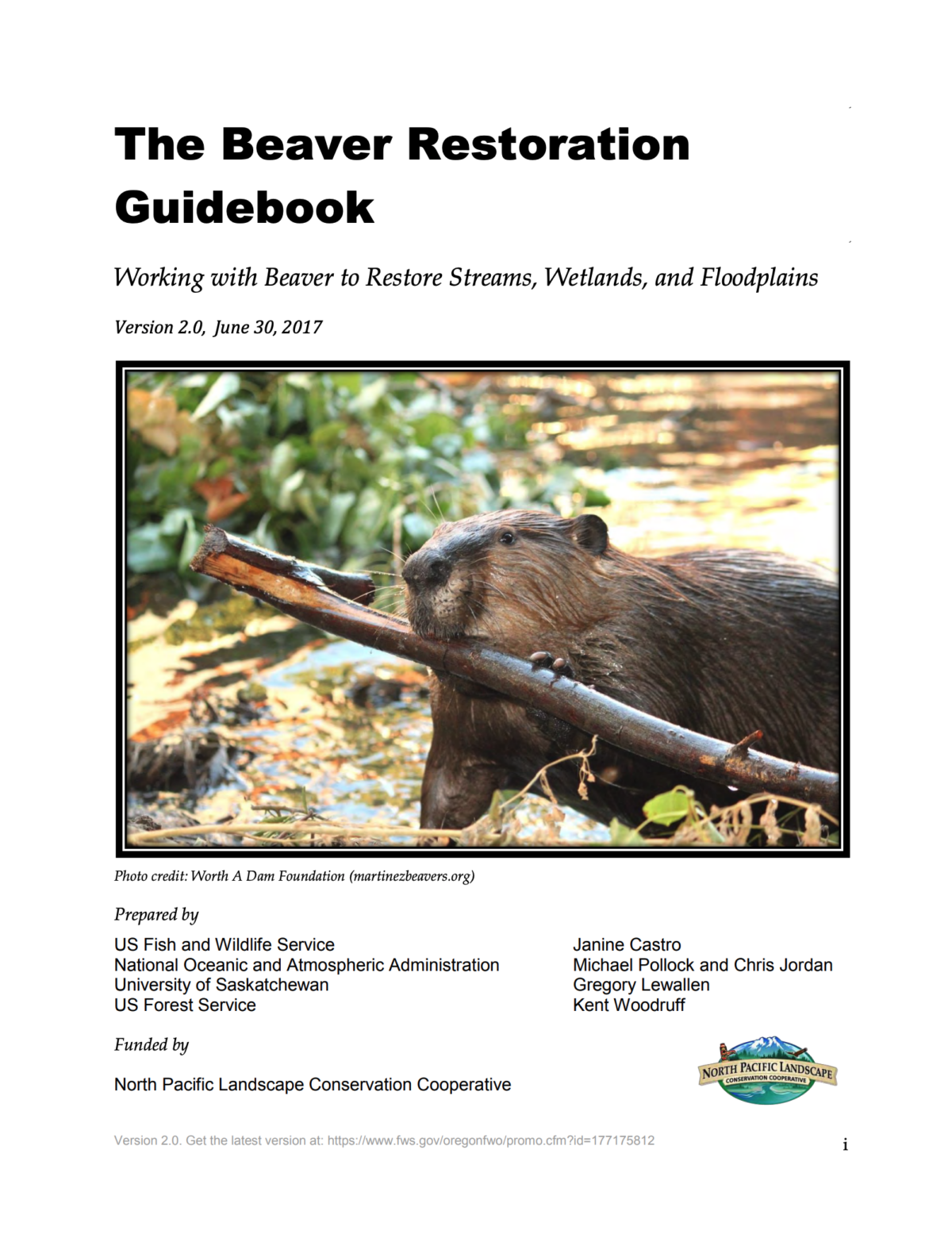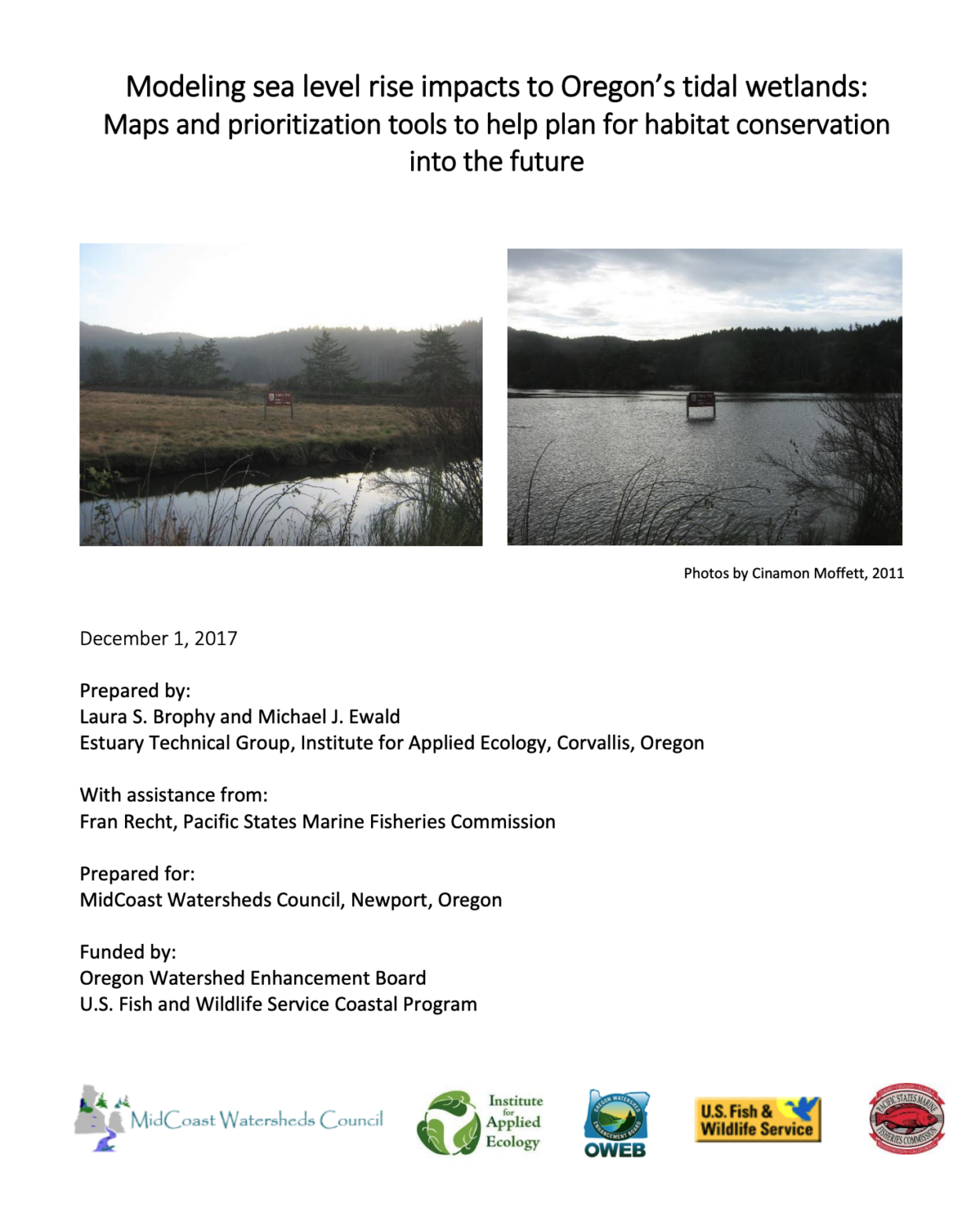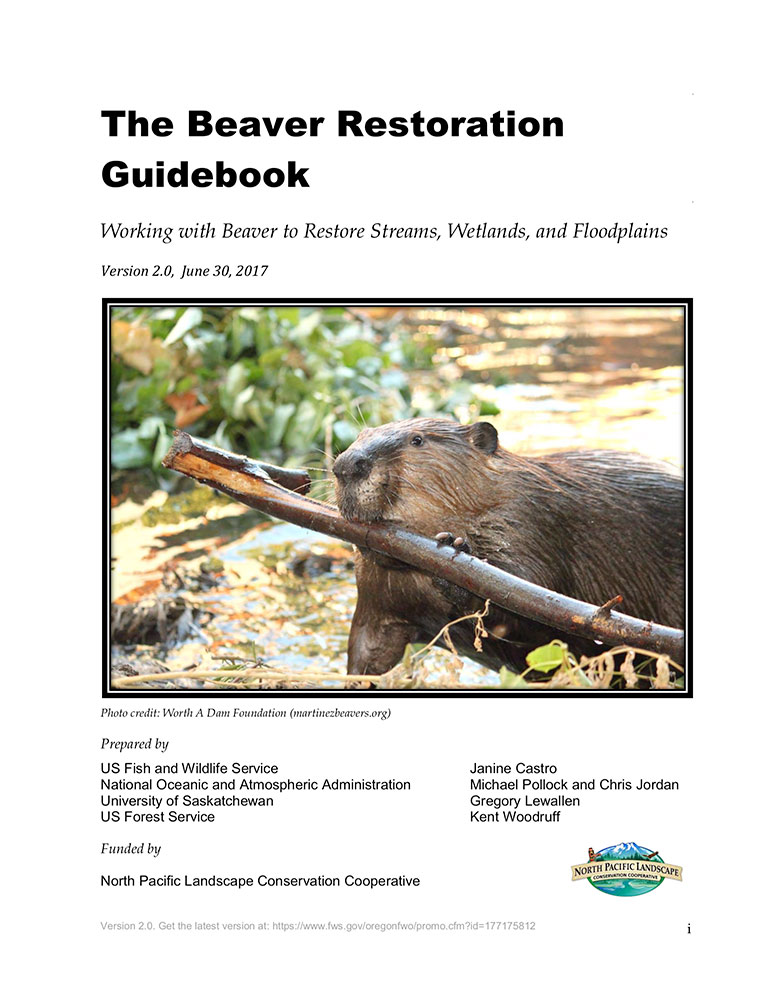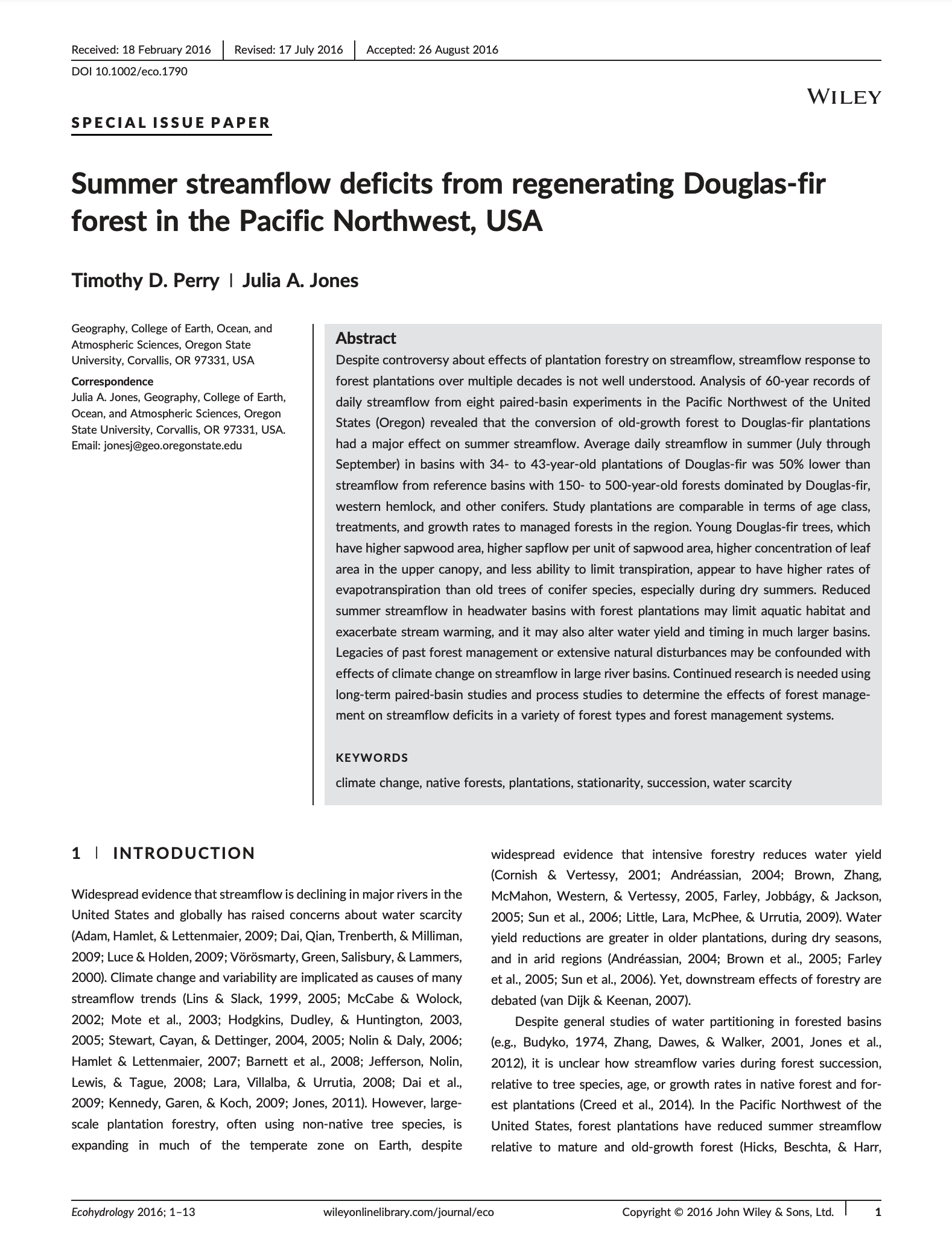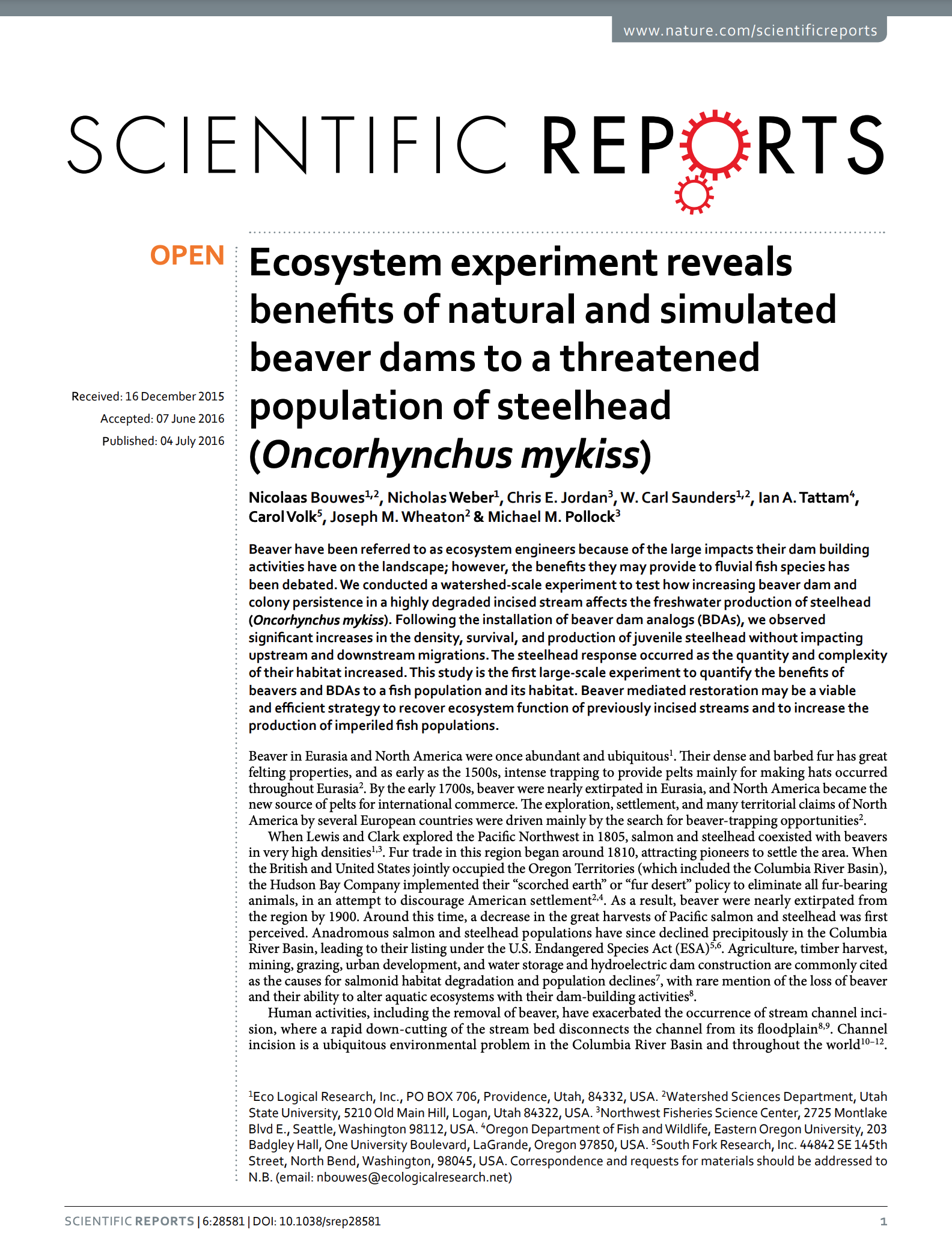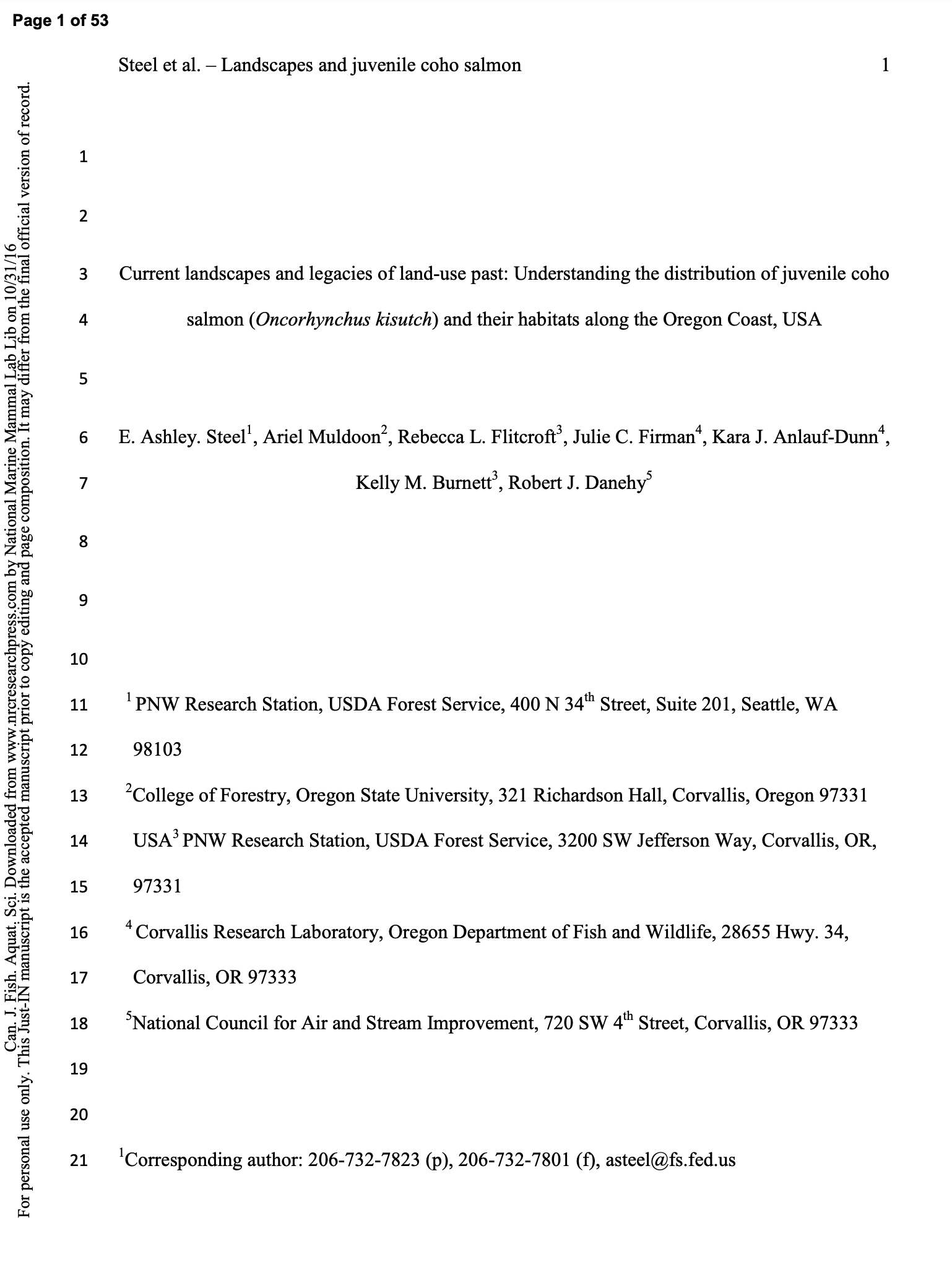Beaver Restoration Guidebook (Pollock et al, 2017)
admin2022-06-28T13:45:18+00:00Increasingly, restoration practitioners are using beaver to accomplish stream, wetland, and floodplain restoration. This is happening because, by constructing dams that impound water and retain sediment, beaver substantially alter the physical, chemical, and biological characteristics of the surrounding river ecosystem, providing benefits to plants, fish, and wildlife. The possible results are many, inclusive of: higher water tables; reconnected and expanded floodplains; more hyporheic exchange; higher summer base flows; expanded wetlands; improved water quality; greater habitat complexity; more diversity and richness in the populations of plants, birds, fish, amphibians, reptiles, and mammals; and overall increased complexity of the riverine ecosystems. [...]

